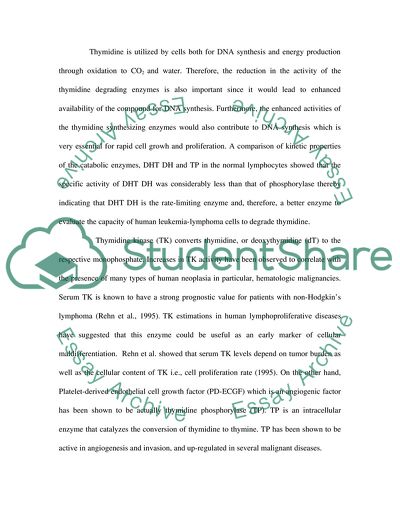Behavior of Activities of Thymidine Metabolizing Enzymes in Human Article. Retrieved from https://studentshare.org/health-sciences-medicine/1729922-behavior-of-activities-of-thymidine-metabolizing-enzymes-in-human-leukemia-lymphoma-cells
Behavior of Activities of Thymidine Metabolizing Enzymes in Human Article. https://studentshare.org/health-sciences-medicine/1729922-behavior-of-activities-of-thymidine-metabolizing-enzymes-in-human-leukemia-lymphoma-cells.


